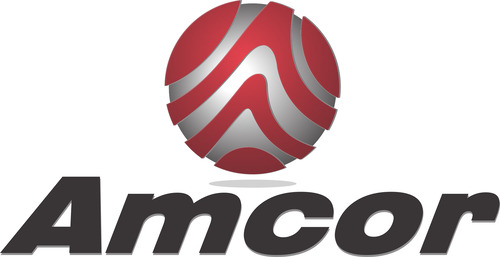Polymer additives are chemicals added to the base polymer to improve processability, reduce raw material costs, prolong the life span, and/or achieve the desired physical or chemical properties in the final product. There are many additive options available and each one offers a specific improvement to the polymer’s functionality or stability. Below are the top five benefits of polymer additives. In addition to the improvements listed below, polymer additives can also be used to provide the desired color, odor, crystallization rate, density, insulation, anti-static, anti-microbial, and many other properties.
- Improved Processing: these additives are combined with the polymer to improve the processability and processing characteristics of the material. Internal and external lubricants are very common processing additives that improve processing efficiency. Internal lubricants improve the polymer flow properties and mold filling by reducing friction within the polymer blend itself; examples of internal lubricant additives are fatty esters and waxes. External lubricants migrate to the surface of the polymer to reduce the friction between the plastic and the manufacturing equipment; examples of external lubricants are metallic soaps and fatty acids. Internal and external lubricants can be utilized together to achieve the desired processing characteristics. In addition to lubricants, there are other additives that can optimize processing properties. For example, de-molding agents can be used to facilitate better release from the mold. Examples of de-molding agents include silicone oils and graphite.
- Decreased Material Costs: fillers, or extenders as they are often called, are inexpensive additives that add bulk to the polymer and reduce costs by reducing the volume of base polymer consumed. Minerals are often used as fillers and examples include calcium carbonate, silica, glass fibers, and carbon black. Fillers can also impact the properties of the plastic such as enhancing its stability and moldability.
- Extended Life Span: nearly every plastic is prone to degradation when exposed to high temperatures, UV light from sunlight, and oxygen including ozone. This degradation can occur during processing or once the product is in service and the symptoms include brittleness, discoloration, and loss of physical properties that reduce the life span of the plastic. Additives, often referred to as anti-oxidants or stabilizers, are added to combat the deterioration of the plastic and to significantly extend the life span of the final product. UV stabilizers absorb UV light, protecting the plastic from its harmful effects. Anti-oxidant additives protect against oxidative degradation by minimizing the opportunity for free radicals to react with oxygen to form unstable molecules. Anti-oxidants, often called free-radical scavengers, react with the undesirable free radicals to prevent the reactions that lead to degradation; additionally, anti-oxidants destroy the locations on the polymer chain that are vulnerable to radical formation. Both forms these anti-oxidants are often used in tandem to achieve the desired stability. Examples of antioxidants include phenols, aryl amines, and phosphates, and examples of UV stabilizers include benzophenones and benzotriazoles.
- Reduced Flammability: flame retardants are additives that prevent, delay, or slow down combustion. Flame retardants can be organic or inorganic compounds that are either mixed with the base polymer, added during the plastic processing step, or as a surface layer finish on the final product. There are different methods that are used by the additives to reduce flammability such as creating a foam layer for extra insulation, chemical reactions to inhibit combustion, and decomposition reactions that produce water. Sometimes more than one flame retardant is used to improve the level of protection. These additives are common in electrical products to avoid the ignition and burning of plastics. Halogens such as bromines and chlorines as well as phosphorus and nitrogen chemistries are common flame retardants.
- Improved Flexibility: base polymers are often rigid and do not have the necessary flexibility and rheology, or flow, properties that are needed for plastics processing. Plasticizers are a type of additive added to improve rheology as well as elasticity. Plasticizers are one of the most common polymer additives and an example is phthalate esters used in PVC products. Plasticizers fit in the spaces between polymer molecules reducing intermolecular forces, leaving the polymer less rigid and more easily handled during manufacturing. Depending on the specific plasticizer, these additives can also impact other physical and mechanical properties of the plastic.
Amcor
Amcor is a manufacturer of polyethylene film and bags, as well as polyolefin compounds, additives, blends, and masterbatches. Amcor has grown from a single product line to hundreds of products and five product divisions. In addition to selling products, we also provide tech support, assistance with your equipment, and process recommendations. Below are some highlights of Amcor’s additive offerings.
| · Flame Retardants | · Rheology Modifiers – Amblend | · Antiblock & Fillers – Amblock |
| · Antistatic – Amstat | · Slip – Amease | · Stabilizers |
| · Processing Aids – Ampro | · Gas Diffusion Agents – Amage | · TiO2 – Amti |
| · Chemical Blowing Agents – Amcell | · Nucleating Agents – Amron | · Cross-Linking Agents |
| · Masterbatch Colors – Amtone | · Specialty Chemicals |
Amcor is also a full line distributor of various chemicals, resins, and gases for the plastic industry. With warehousing and distribution facilities across the United States, Mexico, Eastern Europe and China, we service companies of all sizes and locations across multiple industries.
Amcor realizes that quick turnaround, on time delivery, a quality product, and personal service are what it is all about. Contact us today to learn how we can assist with your next project!

